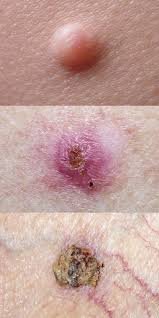Skin cancer is one of the most common types of cancer worldwide, yet it remains one of the most misunderstood. With so much information floating around, it’s easy to believe misconceptions that can put your health at risk. By separating fact from fiction, you can take better steps to protect yourself and your loved ones.
In this blog, we’ll break down some of the most widespread myths about skin cancer and reveal the facts everyone should know.
Myth 1: Skin cancer only affects people with fair skin
Fact: While people with fair skin are more prone to skin cancer due to lower melanin levels, skin cancer can affect individuals of all skin tones. People with darker skin may be diagnosed at later stages, making it more dangerous. In many cases, skin cancer in darker-skinned individuals appears in less exposed areas, such as the soles of the feet or under the nails.
Bottom line: No matter your skin color, regular skin checks and sun protection are essential.
Myth 2: You can’t get skin cancer if you don’t spend much time in the sun
Fact: UV exposure is a major cause, but not the only one. Indoor tanning beds, certain medical conditions, immune suppression, and even family history can contribute to the development of skin cancer. While staying indoors can reduce UV exposure, you’re still at risk if you’ve had significant sunburns in the past or engage in high-risk behaviors.
Myth 3: Sunscreen is only necessary during summer
Fact: UV rays are present year-round, even on cloudy or rainy days. Snow, sand, and water can reflect UV rays, increasing exposure. Wearing broad-spectrum sunscreen with at least SPF 30 should be a daily habit, just like brushing your teeth.
Also, many people forget to reapply sunscreen every 2 hours, especially if they’re sweating or swimming — one of the biggest mistakes when it comes to sun protection.
Myth 4: A tan is a sign of health
Fact: A tan is a sign of skin damage. When your skin darkens, it’s your body’s way of trying to protect itself from further UV damage. There’s no such thing as a “safe tan,” whether it’s from the sun or a tanning bed.
Repeated tanning increases your risk of premature aging, wrinkles, sunspots, and most importantly, skin cancer.
Myth 5: Skin cancer is not deadly
Fact: While non-melanoma skin cancers (like basal cell carcinoma and squamous cell carcinoma) are usually treatable if caught early, melanoma can be life-threatening. It spreads quickly and can affect internal organs if not treated promptly.
According to the World Health Organization, tens of thousands die from melanoma globally each year. Early detection makes all the difference, which is why routine skin checks are vital.
Myth 6: Only adults need to worry about skin cancer
Fact: Sunburns during childhood can dramatically increase the risk of developing skin cancer later in life. Teaching sun safety to children—wearing hats, sunscreen, and seeking shade—should start early. The earlier you build these habits, the more you can reduce long-term risk.
Myth 7: Skin cancer always forms in areas exposed to the sun
Fact: While sun-exposed areas like the face, neck, and arms are most at risk, skin cancer can develop anywhere on the body, including the scalp, under the nails, soles of the feet, and even between fingers and toes.
That’s why it’s important to check your entire body regularly for any new or changing spots, moles, or lesions — and not just the areas you see every day.
Myth 8: If a mole isn’t changing, it’s safe
Fact: While changes in size, shape, or color are major warning signs, not all skin cancers present this way. Some cancers appear suddenly as new growths or as persistent scaly patches or sores that don’t heal.
Be aware of the ABCDEs of melanoma:
- Asymmetry
- Border irregularity
- Color variations
- Diameter over 6mm
- Evolving over time
Any suspicious or persistent skin change should be evaluated by a healthcare professional.
What Can You Do?
- Use sunscreen daily – SPF 30 or higher, broad spectrum, water-resistant.
- Wear protective clothing – hats, sunglasses, and UPF-rated fabrics.
- Avoid tanning beds – they significantly increase skin cancer risk.
- Get regular skin exams – both self-checks and professional evaluations.
- Stay informed – know your risk factors, including family history and past sunburns.
Final Thought from the Expert
As Dr. Shaun Segal, a board-certified dermatologist, points out, “Early detection is the key to survival. Educating yourself and performing regular skin checks can save your life.”
There is a lot of misinformation when it comes to skin cancer. By busting these myths, you can protect your skin and promote awareness among your family and community.
Skin cancer is common but highly preventable. Staying vigilant, adopting smart sun habits, and knowing the facts can go a long way. Don’t let myths put your health at risk. Be proactive, schedule skin check-ups, and protect the skin you’re in — it’s the only one you’ve got.
